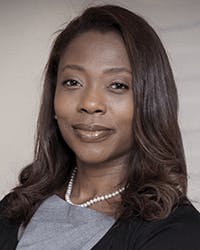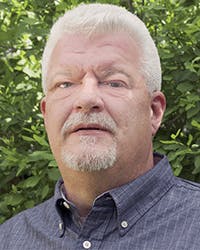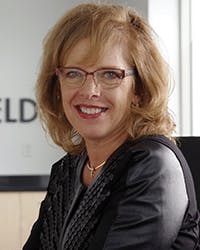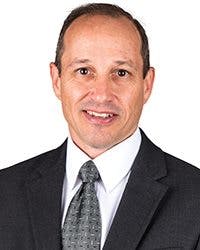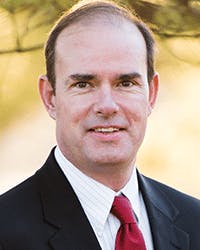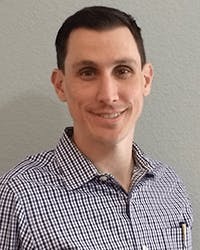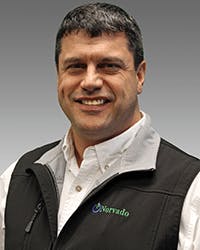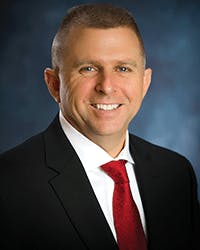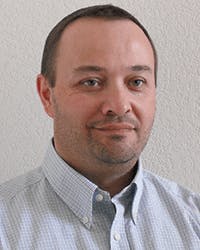Check out Part 3 of ISE magazine’s insider Q&A with telecom executives across the country. Several topics and questions were posed, and each of our Visionaries chose 3 to answer. Read on for their insights.
STRATEGIC CHANGE
What are the challenges of designing and implementing strategic change in an industry such as ours? How do we prepare our networks, equipment, and PEOPLE, to be ready for the changes ahead?
NETWORK TRANSFORMATION
TIA recently shared a good visual about the changes taking place across the network. Which areas do you think we are making progress on and which are in need of attention? What are your organizations’ priorities related to this evolution and why?
5G AND CONNECTED/AUTONOMOUS
Connected/Autonomous vehicles will play a significant role in future transportation systems. Future 5G connectivity is one of the underpinning technologies allowing these vehicles to evolve from being autonomous systems to "cooperative entities" — communicating with other vehicles (V2V) and roadside infrastructure (V2I) to share sensory data and maneuvering intentions. These cooperative vehicles are the key enabler of new Mobility as a Service (MaaS) models, with the information exchanged being fundamental to improving road safety and efficiency, as well as paving the way to advanced ITS (intelligent transportation systems) applications. What needs to happen across the network to make this a reality?
SMALL CELL PROCESS IMPROVEMENTS
Small cell deployment barriers can include regulatory red tape, municipalities’ timelines, as well as sometimes-exorbitant fees imposed at the local level on wireless infrastructure. The challenge to scale small cells to meet the needs of ultra-dense 5G networks also extends to how service providers, tower companies and crews adjust their deployment approaches and evolve their skills. Since small cells must work in urban areas, at street level or on rooftops, there must be new processes developed for this type of site design and building. The demand for fiber connectivity also requires new skills for tower technicians. What are some solutions you believe can help address these interwoven challenges?
THE HUMAN NETWORK
More than 107,000 jobs have been cut during the past 2 fiscal years across 20 major telcos according to Light Reading. The head count reductions are the result of telco efforts to boost efficiency through automation, merger activity, and other cost-saving measures. Those reductions have translated into a gradual increase in revenues per employee, says Light Reading. Their calculations found average revenues per employee rose from about $424,000 in the 2016 fiscal year to around $435,000 in 2017 — an increase of about 2.6%. Verizon came in at approximately $811,000 per employee. AT&T delivered about $632,000 per employee. Comparatively, Google generated about $1.38 million in revenues for every worker in 2017. Facebook had per-employee revenues of $1.62 million. What is your take on this, and what does it mean for our industry?
SUSTAINABILITY
What are some advances in sustainability and power reductions you’d like to see across the wireline and wireless networks?
ARTIFICIAL INTELLIGENCE
Artificial Intelligence, or A.I., allows smartphones to perform highly sophisticated functions such as augmented reality (e.g., Pokémon Go), speech recognition, indoor navigation, and even learning the daily tasks and preferences of an individual to enable digital assistants like Siri and Alexa. Some of the A.I. applications being used by the leading service providers include: customer service chatbots, like CenturyLink’s "sales assistant"; speech and voice services for customers where they can explore or buy content by speaking; traffic classification, network optimization and orchestration; and predictive network maintenance, like AT&T’s self-healing and self-learning hardware that’s powered by A.I. Share your opinion about A.I. and the impact it will have on service providers and the vendors supporting them. Why is this important?
AGILE THINKING
What’s the best question you’ve been asked in the past 30 days? Is there a question you have not been able to answer? Share it please.
FIBER DEPLOYMENT
We know that fiber is the holy grail. However, we still struggle to find ways to reduce fiber deployment costs. With 5G trials included in the plans of most large service providers, what are some innovative solutions to get fiber where it is needed?
VIRTUALIZATION
Network transformation is all abuzz with SDN/NFV and more. Some say the key to true transformation must make changes on many levels: cultural, talent, customer experience, technology, and platform. What is the most important piece and why? What gives you the biggest headache on the SDN/NFV roadmap?
OVERLOOKED ISSUES
What should we be talking about that we are not? What is the network side of the ICT industry missing?
MY TAKE
Share one problem/challenge that you are passionate about solving in the ICT industry.
SUSTAINABILITY
It is interesting to reflect on how corporate thought regarding sustainability has evolved over the last 30 years. Gone are the days of strictly thinking "all packaging must be recyclable," and instead smart companies are viewing the subject in a new way. Company leaders are unleashing the brain power of their engineering and operations experts to look at the entire product realization process in a new way. Such an approach can result in a wide variety of benefits to the company, its customers, and the community at large.
Among the new ways that sustainability is being pursued is through the deployment of renewable energy production at manufacturing plants, and by turning waste into possible revenue streams for the company. Further, by demonstrating a commitment to stakeholders, the company may receive a variety of "intangible" benefits such as positive media coverage, as well as attracting the best of those entering the workforce who have grown up with the message "reduce, reuse, recycle" since they entered kindergarten.
AGILE THINKING
Perhaps the question I struggle with most often, and the one which seems to be on the minds of most adults in one form or another, is the trade-off between the collection of huge sets of data versus personal privacy. Where does the responsibility begin and end for service providers and others that have access to such data?
A real-world example is the amount of data collected by our cell phones. Simple data such as where the phone is located for each day of a given month can seem innocuous, but such data can be extremely valuable, for example, to those that have an interest in marketing to frequent travelers.
OVERLOOKED ISSUES
With multiple factors driving fiber ever deeper into the network, it is time that the industry seriously consider the implications of fiber inside the consumer’s premises. While there have been scattered proposed solutions that include using technology such as multi-mode (MM) or plastic optical fiber (POF), thus far I am not aware of an industry-supported effort to create a standard for consumer-grade optical connectivity. This standard would be analogous to the HDMI standard which has become ubiquitous throughout consumer electronics. Such plug-and-play simplicity will be required to bring the benefit of broadband into the consumer’s home.
[toggle title=”Biography and Company Profile” load=”hide”]Mike is responsible for directing all technology efforts at Amphenol Broadband Solutions, bringing together the creative forces of Times Fiber, Holland Electronics, Extreme Broadband Engineering, and All Systems Broadband. Mike has over 25 years of telecommunication experience with an outside plant focus; the first 20 years of experience began at Raychem. Previous roles include product development, product management, and sales.
Email: [email protected]
LinkedIn: /michaelgrice
Amphenol Broadband Solutions is a provider of custom-engineered solutions and an independent manufacturer of connectivity products for service providers. Specializing in products that increase revenue and simplify operations for applications such as fiber to Multiple Dwelling Units (MDU), fiber to the business (FTTB) and fiber to the home (FTTH), ASB counts the country’s largest telcos and cable companies among its valued customers. The company’s product lines include; fiber cables and apparatus, fiber enclosures and shelves, passives, HDMI and A/V cables, and more. ASB’s passive products include a variety of splitters, CWDM, DWDM and hybrid circuit arrangements contained in the most compact form factors in the industry. More information is available on the company’s website at www.go-asb.com. www.allsystemsbroadband.com[/toggle]
STRATEGIC CHANGE
AT&T is on its way to becoming the global leader in telecom, media, and technology, through a major business transformation. This transformation requires everyone at AT&T to evolve our skills to match the new technologies we encounter every day in ideating, developing, and implementing new products, services, and infrastructure. The need to develop a pipeline of employees with the skills to drive significant transformation in technology has never been more critical.
This re-skilling of our employees is accomplished first through a culture of continuous learning. Our employees benefit from access to a corporate university — AT&T University — that delivers our flagship training program, and is recognized among the best in the country. AT&T invests about $200 million a year to train employees, providing nearly 18 million hours of training, plus over $24 million in tuition aid.
5G AND CONNECTED/AUTONOMOUS
AT&T is in a unique position to support next-generation applications quickly and efficiently thanks to our SDN, A.I. and machine learning, and Open Source network approach, combined with our spectrum position and broadband build-out commitment to millions of locations throughout the US. Our 5G roadmap reflects an ecosystem that was built by AT&T to be at the forefront of new wireless and antenna technologies and unlicensed spectrum capabilities via our 5G testing and trialing efforts.
Our leadership in software-defined networking gives us a 5G advantage. Cost is one of the critical attributes of NFV and SDN. 5G is ideal for bandwidth-hungry applications because it will support multiple radio interfaces, enable more spectrum efficiency, and take advantage of SDN and NFV. AT&T’s leadership in A.I. and machine learning will play a key role in providing our customers with the best 5G experience while we’re operating an efficient network.
MY TAKE
Increasing diversity of thought by highlighting the importance of investing in education within more diverse candidates. At AT&T, diversity and inclusion are essential to our culture and our success — helping to foster big ideas, fresh perspectives, and bold leadership. These principles play an essential role in innovation, and help us play a more vital role in our communities. Engaging in practices that support diversity, inclusion, and equality is a fundamental aspect of how we do business.
The tech industry needs a capable and diverse pipeline of employees to fuel 21st Century jobs. In 2016, our company filled about 40,000 jobs, a large proportion of which were in STEM-related fields. As a woman in the field, I am passionate about exposing girls to STEM professions and activities.
[toggle title=”Biography and Company Profile” load=”hide”]Natasha leads a customer-centric culture that drives change and constant improvement for Provisioning and Maintenance of the Local Network Services (LNS) Network along with Low and High Speed Service Delivery (DS0, DS1, DS3) and Maintenance. Natasha began her career with AT&T in 2009. During her career, she held positions working/leading teams in Network Operations, Customer Care, Uverse Field Operations and Service Assurance. In March, 2016 she was promoted to Director of Hosting, Cloud and DMS services. She began her current position in the Global Delivery & Assurance team in November 2017. Natasha earned an MBA degree and Bachelor of Science degree in Mechanical Engineering from the University of Missouri Kansas City.
Email: [email protected]
Social Media: www.linkedin.com/in/natashaclarkmba
InvisiLight® Solution for Deploying Fiber
April 2, 2022Go to Market Faster. Speed up Network Deployment
April 2, 2022Episode 10: Fiber Optic Closure Specs Explained…
April 1, 2022Food for Thought from Our 2022 ICT Visionaries
April 1, 2022Bill Walker
Senior Director, Network Architecture – SDN, NFV, and Cloud
CenturyLink
STRATEGIC CHANGE
Culture and "industrial habits" are the hardest to change. The technology is easy, training can be arranged and promoted, people can be hired. But how we work together, and how we do our daily jobs has the most effect on results in agile, dynamic projects.
NETWORK TRANSFORMATION
I believe that we are making significant progress on all of the initiatives listed. The technology is mature enough to implement safely, the people are knowledgeable enough to deploy and support, and the technology budget cycles are expiring quickly enough to begin real rollouts of the new ways of doing things. Habits and culture, and the telco mindset, are the only things really holding us back.
CenturyLink has evolved a habit of asking Why not the new way? for every new initiative and project. The behavior of always questioning brings teams closer, and opens communications that spread the knowledge and skills across the traditional silos.
THE HUMAN NETWORK
When we talk about operational efficiencies and automation, there is a natural decrease in required staffing for the functions under transformation. This is good for the company, but has a limited "ceiling" of effect. Growing revenue, and growing profitable revenue, needs to be the real goal for long-term survival. New services, new customers, new ways of peering and partnering deeper into the customers’ needs is the only way to grow positive long-term business.
[toggle title=”Biography and Company Profile” load=”hide”]Bill’s technical expertise is in capacity management; service level management; and systems, network, and infrastructure architecture. He also has a strong background in Solaris- and Unix-based systems, as well as cloud systems architecture, virtualization and server systems architecture. He has extensive experience in multiple industries, including telecom, energy, retail, banking and finance, government and public sector and healthcare. Prior to CenturyLink, Bill was with Huawei, based in Shenzhen, China. At Huawei, he led the IoT, Smart City and Carrier IT initiatives, and was an early supporter of SDN and NFV efforts.
NETWORK TRANSFORMATION
I recently had the opportunity to spend a long weekend with my college-age son in New York City. While playing tourist and taking in Yankee baseball was great, the real takeaway was the practical street-cred that a visit like this provided. You may be familiar with the concept of white-box electronics, but let’s apply some practical street-cred to take this to the next level. How can the Open Source concept be extended to passive connectivity — without jeopardizing the standards that are necessary for reliable performance? Open Source enables broadband service providers to not "marry" one specific vendor, yet Open Source doesn’t equate to commodity product offerings without service differentiation. The industry needs products that meet industry-standards yet are flexible in their configuration to enable the carrier to adapt more easily.
SMALL CELL PROCESS IMPROVEMENTS
While plug-and-play is meant to be user-friendly — and it has been a nice catch phrase for a long time — the plug-and-play approach in the fiber world really hasn’t been all that user-friendly. Large, bulky connectors, custom cables, long lead times etc., have limited the usage of true plug-and-play fiber solutions. The small form-factor of pushable connectors, on the other hand, allow for their use in almost any environment speeding the deployment of small cells. Imagine telling a customer that you want to drill a 3-inch hole in the side of their building in order to provide service. With small form-factors, the hole is no bigger than the size of your index finger. And how about saying I won’t need to drill any hole because I can use the limited space you have in your service conduit. Now that’s true plug-and-play.
FIBER DEPLOYMENT
5G is evolving, and it may be impossible to predict the scale and location of fiber placement so that the desired street poles have enough multiple fibers. But what’s already here is the ability to push pre-connectorized MPO (Multi-fiber Push On) cables to the desired end-point. Allowing 12-fiber cable assembles to be brought directly to the point of use through a small 14/10 microduct (outside/inside diameter) saves time and thus money. And in considering that trip to New York City, pushing 12-fiber assemblies wherever and whenever you want means passing and connecting more locations every day.
[toggle title=”Biography and Company Profile” load=”hide”]A founding member of Clearfield, Inc., Cheri is considered a communications visionary. She was appointed Clearfield President and CEO in 2007 after having served as President of APA Enterprises’ subsidiary APA Cables & Networks. Under her direction, Clearfield has recorded 10 consecutive years of profitability and posted historic gains in both the market capitalization and shareholder equity. Under her leadership, Clearfield was named to the prestigious Forbes Annual List of America’s Best Small Companies in both 2013 and 2014.
FIBER DEPLOYMENT
Rolling out 5G service in greenfield sites will require new fiber for small cell upgrades or for the placement of FWA radios. On the other hand, many existing wireless sites like macro sites or rooftop sites already have fiber connected to them, so achieving more bandwidth could involve overbuilding with additional fiber, or technologies like WDM could be deployed instead.
Recent innovations to increase network capability and deployment speed include high-density ribbon cables or micro cables paired with micro ducts placed in small slots in the pavement. Other advancements to cost effectively get fiber where it’s needed are small-form-factor preconnectorized terminals and cables that enable connectivity in small handholes or even within the base of poles, reducing labor and civils costs.
SUSTAINABILITY
As wireless and wireline operators upgrade their networks to support higher bandwidth, they have an opportunity to also deliver strategic sustainability improvements. Wireline operators are responding to increased demand on their network architectures in part by moving away from custom-built proprietary access platforms in the central office in favor of software-defined network technologies. This transformation results in a smaller central office footprint that reduces the operator’s cooled footprint as well.
For wireless operators, the introduction of small cell requires a careful balance between an optimal RF design and necessary reductions in power requirements. Operators are considering centralized power solutions, tapping into power sources where available while deploying power to remote radios over the fiber infrastructure. The result is a much lower power footprint with an optimal RF design in the deployment of higher-capacity small cell technologies.
NETWORK TRANSFORMATION
The network transformation underway primarily revolves around a massive shift to an open source system. The legacy central office with its traditional vendor-specific hardware, proprietary software, and closed systems, is transitioning to data center functionality with open source software and commodity hardware (i.e., white boxes). With the crux of the evolutionary change occurring at the actives, Corning is positioned to help operators converge multiple language protocols onto one common fiber hardware and cable platform. Our constant priority is to help our customers get ahead, so we continue to invest in research and development that enables them to deliver what’s next.
[toggle title=”Biography and Company Profile” load=”hide”]Bob is responsible for global Carrier Networks Market Development to include strategy and execution of Corning’s Fiber-to-the-Home (FTTH), Fiber Deep, Inside Plant, and other Carrier network applications. Active for 15 years promoting optical fiber networks through education and public policy, Bob has developed commercial and technical expertise in all aspects of optical communications. He is one of the three founding individuals of the FTTH Council NA. Previously, Bob was Director for Global FTTH Program Management, and has held a variety of Engineering, Marketing ,and Market Development positions. Prior to joining Corning in 1997, Bob served as a Nuclear Power Engineering Officer in the US Navy.
SUSTAINABILITY
Over the last 5 years, solar products manufacturers have continued to improve upon the reliability and efficiency of off-grid solar power. Advances in network technology have shrunk the Central Office equipment as well as power utilization. We are now seeing new sealed remote DSL/Fiber cabinets that consume even less power and real estate. This has allowed solar to become a viable alternative for the first time. Solar can now be used to power those remote locations completely with more reliability than the utility grid. Solar can also be used to eliminate the need for generators at remote locations. The time to reach for sustainable power generation is here. It’s not just about saving on your utility bill but rather improving the reliability of your network. How well does your redundant path fiber network function when you don’t have power? Your network is only as good as the power that is keeping it up and operational.
MY TAKE
It’s no secret that we at ESPi are on a mission to solve the powering challenges that continue to plague the telecommunications industry. Whether it be solar generation to provide a replacement for utility power, adding solar panels as a backup to eliminate the need for a generator, or a temporary -48V install, we are extremely passionate about reliable power generation. I am continually looking for new ways to solve these challenges brought to me by telecom professionals. Our motto No Power? No Problem! is what gets me out of bed every morning.
FIBER DEPLOYMENT
Although getting fiber to all locations can be challenging, so is getting power to these remote sites. Jody from North Carolina says, "Often it’s much easier to get network connectivity for the devices than it is for power." The additional cost for utility power to these locations can be exorbitant. The dedicated meter cost, plus monthly usage fees, can make profitability from these sites challenging. Even the alternative of sharing power with a tenant has its own set of challenges. Many of these 5G locations would be much better served with off grid solar power to solve these challenges.
[toggle title=”Biography and Company Profile” load=”hide”]Chris has more than 20 years of telecom engineering experience, and has a passion for powering things. He was instrumental with one of the very first IPTV-over-copper deployments in the US. He was also the 1st MEF CECP engineer in Oklahoma. He holds multiple patents and continues to create innovative ways to power network devices, including the award-winning Voltar solar UPS. He lives in Stillwater, Oklahoma, with his wife Paige and 2 Westies. Email: [email protected]
THE HUMAN NETWORK
There are two ways I could interpret this data. First, Google and Facebook are newer companies, so when they built their infrastructure they were able to automate due to not having legacy equipment, regulation, and technical debt. This could be what enables them to have a higher revenue per employee. However, there is another way I could interpret this data. The "Terms and Condition" Industry that can tailor advertisements to customer’s usage patterns is so much more lucrative than providing Internet service.
ARTIFICIAL INTELLIGENCE
As 5G must be placed very close to each other with large download capability, there are two ways to manage the infrastructure. Building a large infrastructure with little to no oversubscription or building a heavily oversubscribed network and manage the traffic. This first option is heavily on capital expenditure and the second option is heavy on the expense dollars. A.I. could help with the second option. By having real-time traffic classification and network optimization, this could allow companies to reduce the capital expenditure without driving expense up. This would also allow companies to more efficiently manage their traffic, but also have higher network reliability. As self-healing and self-learning A.I. is expanded, the time to resolve an issue will greatly decrease as A.I. will be much faster than human intervention to resolve an issue.
VIRTUALIZATION
Cultural Transformation is the most import component to the migration to SDN/NFV. Even though this industry is fast-paced in its evolution, it has always been built around a hardware-centric infrastructure. Our organizations, processes, and mindsets are all built around a hardware concept. As we move our organizational process from deployment of hardware to development of code, how does the organization change, and how is the reception? That will be the crux of a successful implementation for a company’s transformation to an SDN/NFV-based world.
[toggle title=”Biography and Company Profile” load=”hide”]Christopher creates network standards for ISP and OSP Engineering. He is currently based out of Allen, Texas. Previously, Christopher worked as Director of Video and Network Engineering. He graduated from Tulane University with a Bachelors of Science in Electrical Engineering.
NETWORK TRANSFORMATION
White boxes are making a significant disruption today, mainly in The Last Mile. Large-scale network deployments are not happening due to lack of expert support and product backing. They have not earned the trust of the network managers who hang their hats on reliability and resiliency. However, today’s model of high-cost hardware, annual support, and repair and return, are making the possibility of a white box core network quite attractive. Our priorities are on automation through APIs and increased Internet network redundancy through a distributed cloud type infrastructure. We are waiting for the equipment vendors to come up with some affordable and useful SDN functions for Tier 3 service providers.
THE HUMAN NETWORK
This trend is similar here at Norvado as well, where we have seen a 4.2% increase in revenue per-employee over the past year mostly because of decreased employee counts, many from retirements. Our revenue per employee falls just below the averages mentioned by Light Reading. An aggressive fiber build has resulted in expenses increasing in similar fashion at a 4.5% increase. Our rural American footprint is now at 90% fiber coverage while the largest revenue companies in the list have some of the least fiber percentages, especially in their rural footprints today. A few of them have made the news in the past year indicating that they have some aggressive plans for fiber buildout over the next three years. Hopefully that isn’t just "Fiber to the Press Release" and it results in more fiber to rural areas as well as to the urban centers.
VIRTUALIZATION
SDN/NFV have been the buzz for several years now and is still stuck in the early adoption stage. Technology and platform transformation is needed to get to the reliability of dedicated physical servers. Virtualization has struggled to pass the business case test when factoring hardware and software costs. Instability of virtual machines and lacking skill sets to support virtualization effectively has steered us toward starting with virtualizing management and monitoring server functions to get our feet wet and build trust in the stability. SDN has a lot of potential but will require a dedicated resource to learn the open source programs and APIs of which small ILECs don’t have, instead of relying on vendors to deliver an SDN product.
[toggle title=”Biography and Company Profile” load=”hide”]Rob is the Broadband Operations Manager at Norvado, located in Northwestern Wisconsin, where he has worked since 1998. He spent 7 years prior to that with Nortel in the transport, switching and cellular markets earning him 27 years in the telecommunications industry with extensive experience in network engineering and designing of wireline, wireless, cellular, IPTV and broadband networks. He can be reached at [email protected].
THE HUMAN NETWORK
Efficiencies will always be a part of every industry. Boosting efficiency and leveraging automation to control costs is critical to a business’s success and offers a competitive advantage in the market place. The changing workforce and technological advancements have led to consolidated data center and central office employees. Technical innovation improves the backend of the network and changes how customers do business with telecommunication providers. The combination opens up more opportunities for customer self-service options, thereby allowing customers to do business on their terms. As the network continues to transform into a more software-centric world, it will require less human touch. In the long-run, this, like Google and Facebook are reporting, leads to an increase in the revenue generated per employee.
ARTIFICIAL INTELLIGENCE
Today, the world is filled with big data and analytics, but the industry is still very green in applying those analytics within Machine Learning/Artificial Intelligence. Customer service A.I. applications work to mimic the customer experience in order to provide a consistent experience for all customers. At the same time, the role of A.I. in PNM (Predictive Network Maintenance) has the potential to identify and resolve potential issues before they directly affect a customer. As PNM continues to evolve, service providers will remain in a position that requires them to understand the software and machine characteristics. Learning from leading indicators in previous network impairment incidents will help providers better predict just-in-time network corrections. The better providers become at predicting and making corrections, the more success they will have in resolving issues before they begin to affect customers, instead of after a derogated or outage situation occurs. When it comes to customer satisfaction, zero downtime and early resolution are both key.
VIRTUALIZATION
Cultural and talent transformation are critical to the continued virtualization of the telecommunications network. Change is hard for everyone. If there is misalignment within an organization, regardless of how effective or technically sound the network virtualization is, the organization will struggle. Virtualization does not just automatically happen. An organization must have a culture of continual learning — from top to bottom. This includes a tight working relationship between engineers and field technicians. If the two are not in sync, virtualization will stall. For any change to be successful and the teams to be in sync, constant feedback is required. This will allow for fine-tuning of both the existing technology and associated operating practice.
[toggle title=”Biography and Company Profile” load=”hide”]Andrew joined TDS Telecom in 1989. Today, he has responsibility for the entire Field Services team. Under his leadership, this team provides timely service installations for consumer and commercial customers. This team also conducts routine preventative maintenance, including testing the integrity of the inside and outside plant networks to ensure ongoing availability of Internet, video and voice services. This team is also responsible for repairing outages caused by natural disaster, equipment failure, or damaged network facilities.
STRATEGIC CHANGE
The strategic network and equipment changes on the ICT horizon seem to be the easy part. I’m not suggesting that they are small or simple, but rather that the industry’s vision is reasonably aligned, and we are well practiced at executing complex network and equipment plans. Personnel will be the greatest challenge. Our success hinges on developing a flexible workforce with a strong blend of hardware and software skills.
This is a fantastic industry for those that thrive on change and challenges.
NETWORK TRANSFORMATION
Windstream continues to embrace and prioritize the open/software-centric evolution, as can be seen in our continued advances with SD-WAN, OfficeSuite UCaaS, and SD-NOW products.
The industry is making good progress at Layer 3. White box alternatives and open APIs are generally available. Data center architectures are well-defined and scaling gracefully. VNFs continue to expand and evolve to a container architecture, and there is an abundance of Open Source activity. Everything isn’t perfect, but momentum is strong.
Layer 2 and Layer 1 momentum is comparatively sluggish. Proprietary hardware still dominates. Open ROADM is progressing slowly. Open APIs are increasingly available, yet are often incomplete or misaligned with the platform roadmap. Progress is occurring, but slowly.
SUSTAINABILITY
The ICT industry has strong focus on power reduction for network equipment and architectures. Examples include continuous efficiency improvements in new hardware, network centralization and virtualization, small cells, 5G, FD-MIMO, and strategic data center placement.
However, we seem to struggle to address user equipment efficiency. This is a more difficult task, as we lack full control of end-user equipment, but we can’t simply point to users and shrug. I struggle to remember the last time I had a TV set-top box that actually turned off when I hit the remote’s power button. As an industry, we need to exert more influence over end-user gear, from both an efficiency perspective and a security perspective.
[toggle title=”Biography and Company Profile” load=”hide”]Jeff is responsible for the standards and integrity of the Windstream transport network. His organization is responsible for establishing the engineering equipment standards and roadmap, the provisioning of layer 1 and 2 infrastructure, and ensuring the continuing reliability and integrity of the Windstream transport network. Jeff has over 20 years of telecommunications experience, both ILEC and CLEC, predominantly focused on architecture, test and certification, planning and engineering. Jeff can be contacted via email at [email protected].
Don’t you wish you were a fly on the wall during the ICT Visionaries LIVE Roundtable on-site at ISE EXPO? Look for the highlights in the November 2018 issue of ISE magazine.


